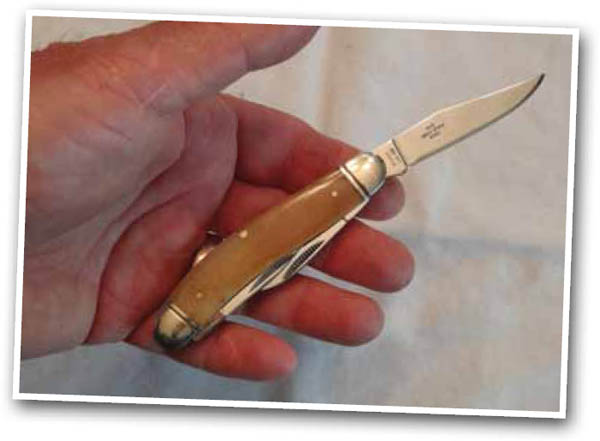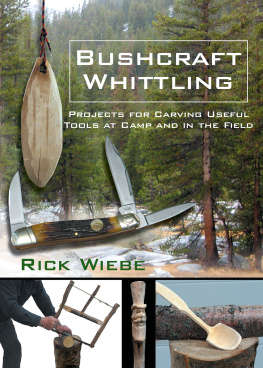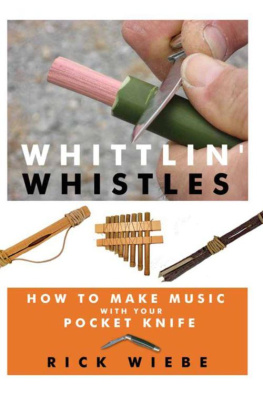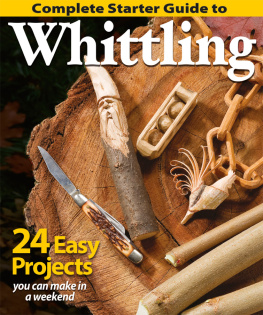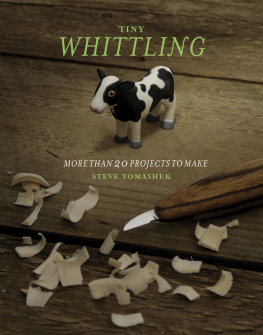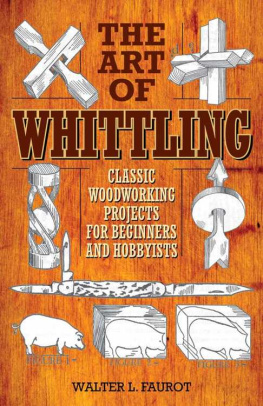CLASSIC
WHITTLING

BASIC TECHNIQUES

OLD-TIME PROJECTS
RICK WIEBE

Classic Whittling
Basic Techniques and Old-Time Projects
by Rick Wiebe
All rights reserved. No part of this book may be reproduced or transmitted in any form or by any means, electronic or mechanical, including photocopying, recording, or by an information storage and retrieval system, without written permission from the publisher.
Rick Wiebe
Linden Publishing, Inc.
2006 S. Mary
Fresno, CA 93721
www.lindenpub.com
ISBN: 978-1-61035-254-3
Linden Publishing titles may be purchased in quantity at special discounts for educational, business, or promotional use. To inquire about discount pricing, please refer to the contact information below. For permission to use any portion of this book for academic purposes, please contact the Copyright Clearance Center at www.copyright.com
Printed in the United States of America
135798642
Library of Congress Cataloging-in-Publication Data
Wiebe, Rick, author.
Classic whittling : basic techniques and old-time projects / Rick Wiebe.
pages cm
Includes index.
ISBN 978-1-61035-254-3 (pbk. : alk. paper)
1. Wood-carving. I. Title.
TT199.7.W534 2015
736.4--dc23
2015026575
Contents

Introduction
Got a knife?
You probably do, and have this book in your hands because you want to use it.
If you dont have one you need to get at least one soon. An old Finnish proverb says a knifeless man is a lifeless man. The Finns have it right in my opinion, and would surely apply the saying to people of both genders. Everyone needs a knife that they can carry with them and use for a myriad of things pretty much every day.
Whittlers, of course, need a knife for their craft as well as for the everyday tasks that are so much simpler when a sharp blade is available. When you get a good knife, get it sharp, and begin to learn to use it, you will make an amazing discovery, a knife is actually a magic wand. With it you can turn ordinary sticks and small pieces of wood that might otherwise be burned or thrown away, into useful, enjoyable and even artistic objects and have fun doing it. Junk to art. Trash to usefulness, firewood to funsounds like magic to me!
That is what this book is all about, teaching you how to wave the wand, so to speak, and have a great time doing it.
I speak from considerable experience in this line, having been whittlin for over 60 years now, with no intention of stopping. It was fun when I was a kid, and a young person. As the years went by I enjoyed making things for other people and in time my own children, and now my grandchildren. For many years I have been teaching a lot of people how to experience this craft. Some have been quite young and some have been getting on in years, and they have all discovered an activity that can bring immense satisfaction.
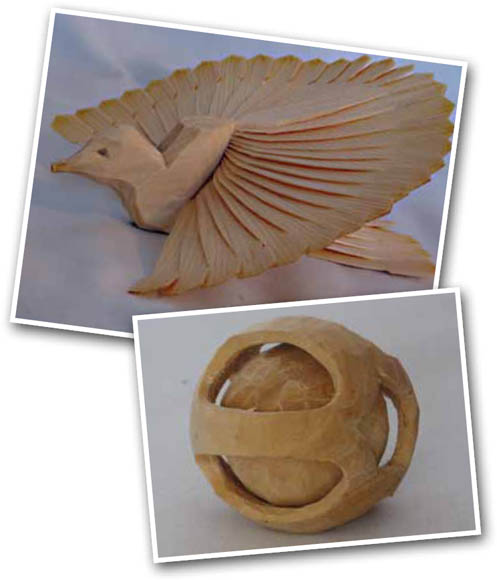
I have found that even people whom, for whatever reason, are not in the process of doing this activity, are still interested to see it going on. If I whittle in a public place, (I often whittle little gifts for servers in restaurants while waiting for my food, or on ferries etc.), it is rare that I dont get a good conversation going with someone that I have never met before. People are fascinated by the magic! They ask a lot of questions, about the wood, the knife, how to sharpen how long Ive been doing it and other things too.
Whittlin isnt just for old guys. It is a lifetime activity. It isnt expensive, and it is safe. Yes, cuts happen, but no one is in any danger of drowning or broken bones or debilitating sports injuries. The only time an ambulance has attended one of my classes, so far, was when someone sat on a bee and had an allergic reaction. Compared with activities like bicycling, swimming and skiing, whittlin is absurdly safe.
It is very a portable hobby and one that fits in with a lot of other activities. It really goes with camping, but all kinds of other things lend themselves to the occasional whittlin fit too. In fact my hand is kind of twitching right now. Maybe yours is too. So lets start!
CHAPTER ONE
Tools & Equipment or Choose Your Wand
Whittlin is just carving while using a knife as the main or only tool. Other kinds of carving use a variety of tools including many hand tools and sometimes power tools of various kinds. Whittlers mostly stick with knives, though sometimes a few other simple cutting tools are used too.
A basic tool that is used often by whittlers is a pocket knife, which folds up and fits safely in a pocket or bag when not in use, but is quickly available when a whittlin fit strikes. For most people a simple folding knife between 3 and 4" long when closed will do the job. There is no need for all kinds of gadgets on the knife, and mostly locks are not necessary either, though there are some knives on which they are useful. Knives need to be small enough so that they are not clumsy but large enough to provide a good and non-cramping grip.

Here are some examples:

This is called a Barlow knife, and similar ones are made by several manufacturers. It is a great knife for anyone, only 3" long, though some companies make them bigger and call them Daddy or even Granddaddy Barlows. This is a good knife for whittlin just the way it iswell except for sharpening which will be covered in the next chapter.

Heres one with a slightly different handle material, and modified blades. Blades can be easily modified using files.
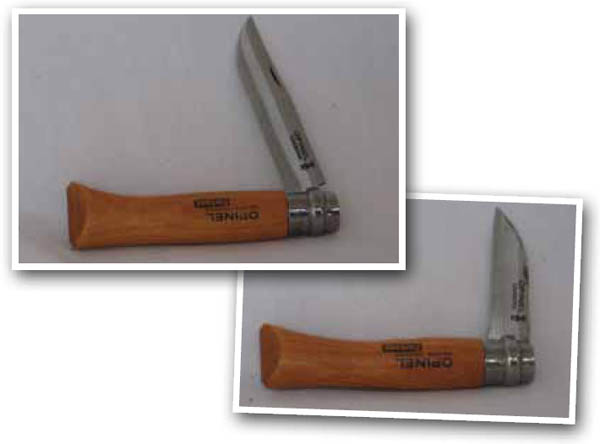
This one is a single bladed locking knife made in France called an Opinel. They are made in many sizes. A #7 or 8 will do the job for most whittlers, especially if they are modified as shown (below).

The handles can be modified to suit the individual too.

This is a Sowbelly Stockman knife that has been modified.
